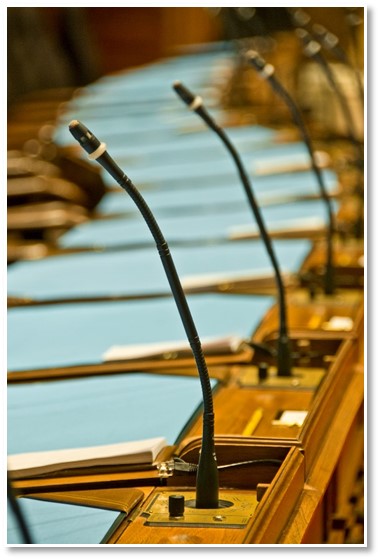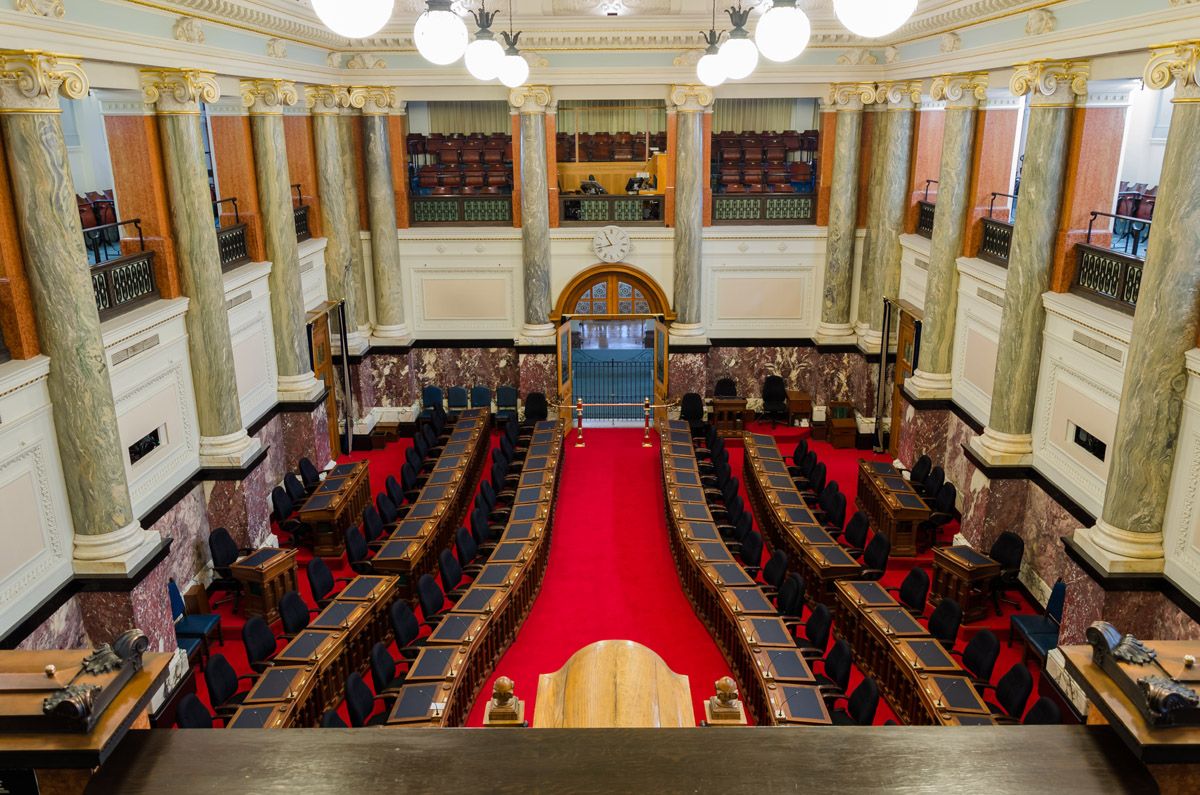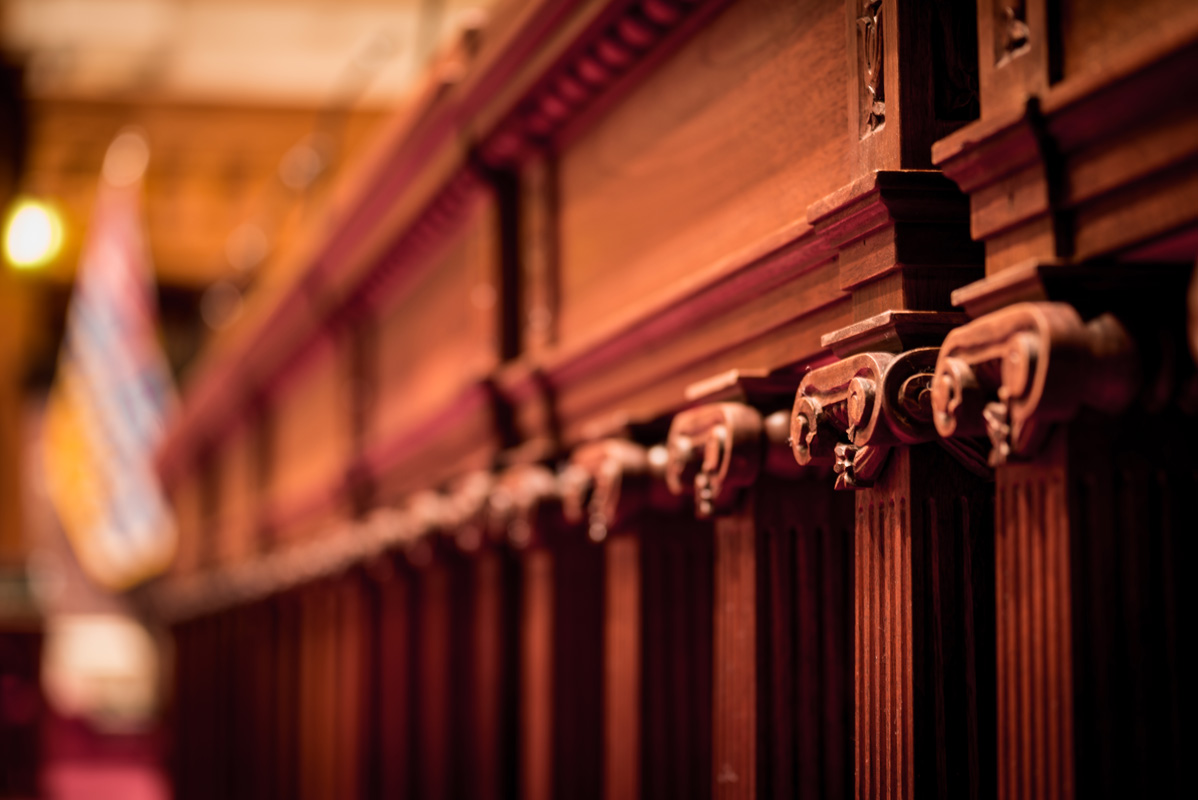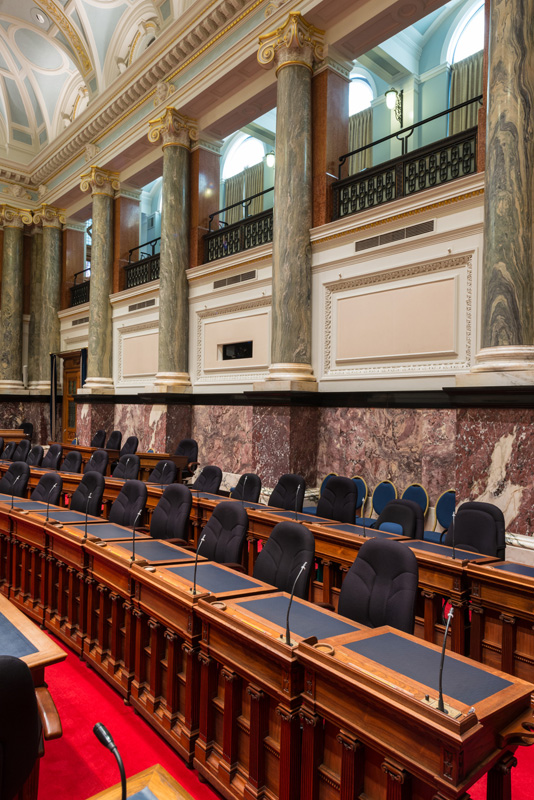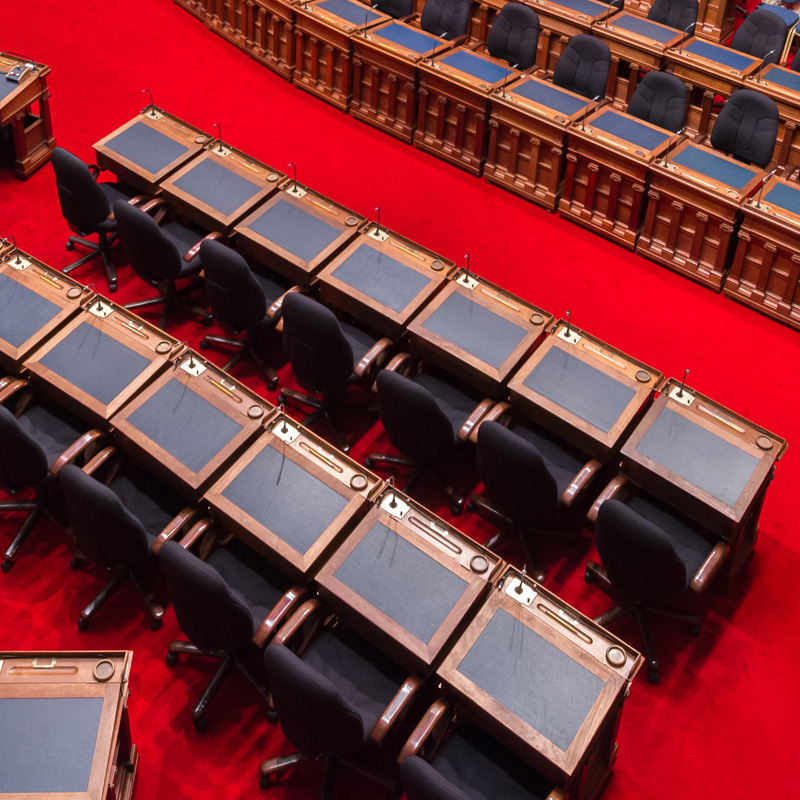The Legislative Chamber is divided into two full and one partial row of desks on each side of the floor. Traditionally, the government sits on the Speaker’s right, and the opposition sits on the Speaker's left.
This arrangement of seats originated in the Chapel of St. Stephen’s at Westminster in the U.K., where Members sat on the chapel benches facing each other. As parliament and parties evolved, Members with shared views took to sitting together and across from their opponents. St. Stephen’s was the home of the British House of Commons until it burned down in 1834 and was replaced by the present Palace of Westminster.
St. Stephen’s is also credited with another parliamentary custom: Members bow to the Speaker’s Chair when entering the Chamber. An altar stood behind the Speaker’s Chair in St. Stephen’s, and Members would bow before it, according to ecclesiastical custom. Even after Members stopped meeting in St. Stephen’s, they continued the practice. It is now considered a traditional mark of respect towards the Assembly for Members to bow when entering the Chamber.
In most parliaments, including British Columbia’s, the desks of the government and opposition members are spaced two sword lengths apart. Historically, this was to ensure that no harm could be inflicted upon a Member during a heated debate in the Assembly. In modern times, weapons are no longer permitted in the Chamber, but the two sword length spacing tradition continues.
Many of the current desks - made of black walnut - are original, but as the number of Members has increased from 36 in the 1894-98 session to the current 93, the desks have been packed ever more tightly. Rather than expanding the size of the Chamber, additional space was created through the use of narrower desks and chairs. To retain the original walnut desks, a Victoria woodworking firm was contracted to modify the desks, making each one 10 centimetres (four inches) narrower. Additional desks based on the original design were then constructed for new MLAs. The configuration of the desks in the Chamber was also changed in 2009, when a partial third row was added on both sides to accommodate desks for additional Members.
